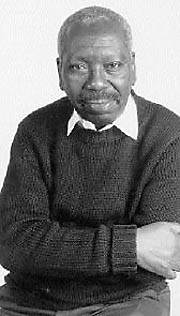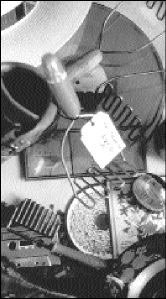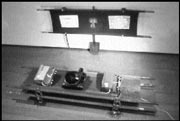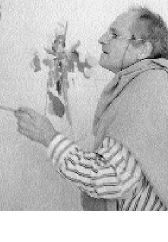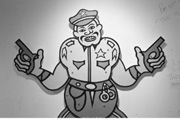JACOB LAWRENCE will be missed. A great American painter of history and urban life, local icon Lawrence died in his sleep last Friday morning at his Seattle home at the age of 82. First and perhaps still best known for his epic narrative series Migration of the Negro—60 paintings that he completed in 1941 at the age of 24—Lawrence went on to establish himself firmly in an art world that rarely deigned to acknowledge, let alone embrace, the work of an African American. Seattle Art Museum modern art curator Trevor Fairbrother called Lawrence “certainly the most important artist in this city. He made art that was fearless in its statements and art that was also beautiful and honest. He spoke the truth in everything he did.”
Born in 1917 in Atlantic City, New Jersey, Jacob Armstead Lawrence was the son of parents who had migrated North during World War I. He moved around a lot as a child, with stints in rural Pennsylvania and then Philadelphia before his parents separated. He then spent a number of years with his brother and sister in foster homes before rejoining his mother in Harlem in 1930. As a teen, Lawrence’s mother enrolled him in after-school art programs. By the mid-1930s he was regularly participating in community art programs, and in 1937 he secured a two-year scholarship to the American Arts School. However, living on slender means and working to help support his family, Lawrence was eventually forced to drop out. By 1938, at 21, he secured employment with the WPA Federal Art Project, working as a professional painter in the easel division.
Paving the way for generations of black artists who would follow, Lawrence was not only the first African-American artist to be represented by a major commercial gallery and the first to receive sustained mainstream recognition, he was a regular participant in annual exhibitions at the Whitney Museum of American Art and the Venice Bienale. Committed to black consciousness and the struggle for social justice, he addressed these issues in the subject matter of his bright and striking paintings, prints, and murals.
Married to painter and sculptor Gwendolyn Knight since 1941, Lawrence moved from New York to Seattle in 1970 to become an art professor at the UW. Represented by the DC Moore Gallery in New York and by the Francine Seders Gallery here, Lawrence was actively painting until several weeks before his death.
